Key Takeaways
1. Two Systems Drive Thinking: Fast, Intuitive vs. Slow, Deliberate
System 1 operates automatically and quickly, with little or no effort and no sense of voluntary control.
System 1 and System 2. Our minds operate through two distinct systems: System 1, which is fast, intuitive, and automatic, and System 2, which is slow, deliberate, and analytical. System 1 is responsible for quick judgments and impressions, while System 2 handles complex computations and conscious reasoning. While we identify with System 2, System 1 is the silent author of many of our choices.
System 1's automatic actions. System 1's capabilities include innate skills like recognizing objects, orienting to sounds, and understanding simple sentences. It also encompasses learned associations and skills that have become automatic through practice, such as reading or driving on an empty road. These actions require little to no effort and occur without conscious control.
System 2's effortful activities. System 2 is engaged when we perform complex tasks like focusing attention, solving problems, or making deliberate choices. These activities require conscious effort and are disrupted when attention is diverted. System 2 has a limited capacity and is easily fatigued, leading to reliance on System 1 when resources are depleted.
2. Attention is a Limited Resource: Effortful Tasks Dilate Pupils
The often-used phrase “pay attention” is apt: you dispose of a limited budget of attention that you can allocate to activities, and if you try to go beyond your budget, you will fail.
Pupils as a window. Pupil dilation is a reliable indicator of mental effort, reflecting the changing demands of a task. More demanding tasks cause greater dilation, while mundane conversations require little effort and result in minimal pupil change. This physiological response provides a visible measure of the mind's energy expenditure.
Mental effort and blindness. Intense focus on a task can make people effectively blind to stimuli that would normally attract attention. This is demonstrated by experiments where individuals engaged in demanding cognitive tasks fail to notice obvious events, highlighting the limited capacity of attention and the selective allocation of resources.
The law of least effort. Both System 2 and electrical circuits have limited capacity, but they respond differently to threatened overload. A breaker trips when the demand for current is excessive, while the response to mental overload is selective and precise. The nervous system consumes more glucose than most other parts of the body, and effortful mental activity appears to be especially expensive in the currency of glucose.
3. System 2 is Lazy: Overconfidence and Cognitive Ease Prevail
People who say 10¢ appear to be ardent followers of the law of least effort.
System 2's primary function. One of the main functions of System 2 is to monitor and control thoughts and actions "suggested" by System 1, allowing some to be expressed directly in behavior and suppressing or modifying others. However, System 2 is often lazy and prone to endorse intuitive answers without sufficient scrutiny.
Overconfidence and cognitive ease. Many people are overconfident and prone to place too much faith in their intuitions. They apparently find cognitive effort at least mildly unpleasant and avoid it as much as possible. This is exemplified by the bat-and-ball problem, where many people give an intuitive but incorrect answer due to a failure to actively check their work.
Intelligence vs. rationality. High intelligence does not necessarily make people immune to biases. Rationality, or the ability to engage in critical thinking and self-monitoring, is a separate ability that varies among individuals. Those who are more rational are more alert, intellectually active, and skeptical about their intuitions.
4. Association is the Foundation: Priming Shapes Thoughts and Actions
The essential feature of this complex set of mental events is its coherence.
Associative activation. Ideas that have been evoked trigger many other ideas, in a spreading cascade of activity in your brain. This process, called associative activation, is quick, automatic, and effortless, linking memories, emotions, and physical reactions in a coherent pattern.
Priming effects. Exposure to a word or concept can cause immediate and measurable changes in the ease with which related words or actions can be evoked. This priming effect can influence behavior without conscious awareness, as demonstrated by experiments where exposure to words associated with the elderly caused young people to walk more slowly.
The ideomotor effect. The ideomotor link also works in reverse. A study conducted in a German university was the mirror image of the early experiment that Bargh and his colleagues had carried out in New York. Students were asked to walk around a room for 5 minutes at a rate of 30 steps per minute, which was about one-third their normal pace. After this brief experience, the participants were much quicker to recognize words related to old age, such as forgetful, old, and lonely.
5. Cognitive Ease Influences Belief: Familiarity Trumps Logic
Anything that makes it easier for the associative machine to run smoothly will also bias beliefs.
Cognitive ease and strain. Cognitive ease is a sign that things are going well, while cognitive strain indicates a problem that requires increased mobilization of System 2. These states are influenced by factors such as font clarity, repetition, mood, and even facial expressions.
Illusions of familiarity and truth. The experience of familiarity has a simple but powerful quality of ‘pastness’ that seems to indicate that it is a direct reflection of prior experience. This quality of pastness is an illusion. The truth is, as Jacoby and many followers have shown, that the name David Stenbill will look familiar when you see it because you will see it more clearly.
Persuasive messaging. To write a persuasive message, maximize legibility, use simple language, and make it memorable. Frequent repetition, rhyming, and easily pronounced sources can increase believability, even if the message is false.
6. Norms and Surprises Define Reality: Causes are Sought Everywhere
A capacity for surprise is an essential aspect of our mental life, and surprise itself is the most sensitive indication of how we understand our world and what we expect from it.
Assessing normality. System 1 maintains a model of the personal world, constantly updating what is normal. Surprise is a key indicator of how well we understand our world and what we expect from it. Events that violate our model of normality trigger a search for explanations.
Seeing causes and intentions. The mind automatically seeks causal connections between events, even when they are spurious. This drive for coherence leads us to construct stories that link fragments of knowledge, satisfying our need for explanation.
The Moses illusion. The Moses illusion is readily explained by norm theory. The idea of animals going into the ark sets up a biblical context, and Moses is not abnormal in that context. You did not positively expect him, but the mention of his name is not surprising. It also helps that Moses and Noah have the same vowel sound and number of syllables.
7. Representativeness Leads to Errors: Base Rates are Ignored
Failing these minitests appears to be, at least to some extent, a matter of insufficient motivation, not trying hard enough.
Representativeness heuristic. People often assess the probability of an event by how representative it is of a category or stereotype. This heuristic leads to predictable biases, such as neglecting base rates and being insensitive to sample size.
The bat-and-ball problem. The bat-and-ball problem, the flowers syllogism, and the Michigan/Detroit problem have something in common. Failing these minitests appears to be, at least to some extent, a matter of insufficient motivation, not trying hard enough.
Intelligence, control, rationality. Researchers have applied diverse methods to examine the connection between thinking and self-control. Some have addressed it by asking the correlation question: If people were ranked by their self-control and by their cognitive aptitude, would individuals have similar positions in the two rankings?
8. Availability Distorts Perception: Fear and Media Skew Reality
People tend to assess the relative importance of issues by the ease with which they are retrieved from memory—and this is largely determined by the extent of coverage in the media.
Availability heuristic. People assess the frequency or probability of an event by the ease with which instances come to mind. This heuristic is influenced by factors such as media coverage, personal experiences, and vivid examples, leading to systematic biases.
The media's role. The availability heuristic helps explain why some issues are highly salient in the public's mind while others are neglected. People tend to assess the relative importance of issues by the ease with which they are retrieved from memory—and this is largely determined by the extent of coverage in the media.
The honesty box experiment. On average, the users of the kitchen contributed almost three times as much in “eye weeks” as they did in “flower weeks.” Evidently, a purely symbolic reminder of being watched prodded people into improved behavior. As we expect at this point, the effect occurs without any awareness.
9. Prospect Theory: Losses Loom Larger Than Gains
The emotional tail wags the rational dog.
Bernoulli's error. Bernoulli’s theory assumes that the utility of their wealth is what makes people more or less happy. Jack and Jill have the same wealth, and the theory therefore asserts that they should be equally happy, but you do not need a degree in psychology to know that today Jack is elated and Jill despondent.
Prospect theory's core principles. Prospect theory proposes that people evaluate outcomes as gains and losses relative to a neutral reference point. It also incorporates diminishing sensitivity to both gains and losses, and loss aversion, where losses loom larger than gains.
The fourfold pattern. The fourfold pattern of preferences is considered one of the core achievements of prospect theory. Three of the four cells are familiar; the fourth (top right) was new and unexpected.
10. Framing Matters: Equivalent Descriptions Evoke Different Choices
The statement that “the odds of survival one month after surgery are 90%” is more reassuring than the equivalent statement that “mortality within one month of surgery is 10%.”
Framing effects. Different ways of presenting the same information often evoke different emotions and lead to different choices. This is because System 1 is highly sensitive to the wording and context of a problem.
The busy and depleted System 2. System 1 has more influence on behavior when System 2 is busy, and it has a sweet tooth. People who are cognitively busy are also more likely to make selfish choices, use sexist language, and make superficial judgments in social situations.
The trolley problem. The trolley problem is a series of thought experiments in ethics and psychology, involving stylized ethical dilemmas of whether to sacrifice one person to save a larger number.
11. The Remembering Self Dominates: Duration Neglect Distorts Value
Memories are all we get to keep from our experience of living, and the only perspective that we can adopt as we think about our lives is therefore that of the remembering self.
Two selves. We have two selves: the experiencing self, which lives in the present and feels pain and pleasure, and the remembering self, which keeps score and makes decisions based on memories. These two selves often have conflicting interests.
Duration neglect and the peak-end rule. The remembering self is prone to duration neglect, ignoring the length of an experience and focusing instead on the most intense moment (the peak) and the final moment (the end). This leads to distorted memories and choices that do not maximize actual well-being.
Life as a story. We tend to view our lives as stories, with a focus on significant events and memorable moments rather than the overall duration of our experiences. This narrative approach can lead to choices that prioritize a good story over actual happiness.
12. Overconfidence Fuels Risk: Illusions of Skill Drive Markets
The world makes much less sense than you think. The coherence comes mostly from the way your mind works.
The illusion of understanding. We tend to construct flawed stories of the past that shape our views of the world and our expectations for the future. This narrative fallacy leads to an illusion of understanding, where we overestimate our ability to predict and control events.
The illusion of skill. In many domains, such as stock picking, people overestimate their own skill and ability to outperform the market. This illusion is supported by the experience of exercising high-level skills and a professional culture that rewards confidence.
The engine of capitalism. The combination of overconfidence and optimism can be a powerful engine of capitalism, driving innovation and economic growth. However, it can also lead to excessive risk taking and costly failures.
Last updated:
FAQ
What's Thinking, Fast and Slow about?
- Dual Systems of Thinking: The book explores two systems of thought: System 1, which is fast, intuitive, and emotional, and System 2, which is slower, more deliberate, and logical. These systems shape our judgments and decisions.
- Cognitive Biases and Heuristics: Kahneman discusses various cognitive biases that arise from our reliance on heuristics, leading to systematic errors in judgment and decision-making.
- Impact on Economics and Psychology: The book bridges psychology and economics, challenging the traditional rational-agent model and offering insights into human behavior in economic contexts.
Why should I read Thinking, Fast and Slow?
- Understanding Human Behavior: The book provides valuable insights into how we think and make decisions, improving personal and professional decision-making.
- Practical Applications: Kahneman offers advice on mitigating cognitive biases in various aspects of life, leading to better outcomes.
- Influential Work: As a Nobel Prize-winning psychologist, Kahneman's work has shaped behavioral economics and psychology, offering groundbreaking research.
What are the key takeaways of Thinking, Fast and Slow?
- Two Modes of Thinking: Recognizing when System 1 or System 2 is at play can help individuals make more informed decisions.
- Cognitive Biases: Understanding biases like loss aversion and the anchoring effect can help mitigate their impact on decision-making.
- Framing Effects: The way information is presented can significantly influence decisions, even when the underlying facts remain the same.
What is the difference between System 1 and System 2 in Thinking, Fast and Slow?
- System 1 Characteristics: Operates automatically and quickly, with little effort and no sense of voluntary control, responsible for intuitive reactions.
- System 2 Characteristics: Allocates attention to effortful mental activities, is slower, more deliberate, and requires conscious effort.
- Interaction Between Systems: They often work together, but System 1 can lead to errors that System 2 may not catch, highlighting the need for analytical thinking.
How does Thinking, Fast and Slow explain cognitive biases?
- Definition of Cognitive Biases: Systematic patterns of deviation from norm or rationality in judgment, leading to illogical conclusions.
- Examples of Common Biases: Includes the anchoring effect and confirmation bias, affecting decision-making.
- Mitigating Biases: Recognizing these biases is crucial for improving decision-making and counteracting their effects.
What is the availability heuristic in Thinking, Fast and Slow?
- Definition: A mental shortcut relying on immediate examples that come to mind, leading to overestimating event likelihood based on recall ease.
- Impact on Decision-Making: Can cause biases in judgment, such as overestimating risks after vivid events.
- Examples in Everyday Life: Affects risk assessment and personal experiences, highlighting the need for rational decision-making.
How does Thinking, Fast and Slow address overconfidence?
- Definition: A cognitive bias where individuals overestimate their knowledge, abilities, or prediction accuracy.
- Illusion of Understanding: People often feel confident in judgments without sufficient evidence, leading to poor decision-making.
- Mitigating Overconfidence: Awareness of this bias and seeking contrary evidence can improve assessments and decision-making.
What is loss aversion in Thinking, Fast and Slow?
- Definition: Losses are felt more intensely than gains of the same size, leading to risk-averse behavior.
- Impact on Decision-Making: Causes individuals to avoid risks even when potential gains outweigh losses, leading to suboptimal decisions.
- Real-World Examples: Seen in financial decisions and negotiations, understanding this bias aids in balanced choices.
What is the planning fallacy as described in Thinking, Fast and Slow?
- Definition: The tendency to underestimate time, costs, and risks of future actions while overestimating benefits, leading to optimistic forecasts.
- Inside vs. Outside View: The inside view focuses on project specifics, while the outside view uses statistical information from similar past projects for accuracy.
- Mitigating the Fallacy: Reference class forecasting helps ground expectations in reality by considering similar project outcomes.
What is the endowment effect as explained in Thinking, Fast and Slow?
- Definition: People assign greater value to items they own compared to items they do not own, leading to reluctance to trade or sell.
- Psychological Basis: Attributed to loss aversion; the pain of losing an item is felt more acutely than the pleasure of acquiring it.
- Experimental Evidence: Experiments show participants value owned items higher, highlighting irrational human valuation.
What is the framing effect in Thinking, Fast and Slow?
- Definition: Occurs when people react differently to a choice depending on its presentation, such as in terms of gains or losses.
- Examples of Framing: The Asian disease problem shows how statistical outcomes framed differently lead to different preferences.
- Importance of Awareness: Recognizing framing effects encourages critical thinking about how options are presented.
What are the best quotes from Thinking, Fast and Slow and what do they mean?
- “Nothing in life is as important as you think it is when you are thinking about it.”: Highlights the focusing illusion, suggesting perceptions can be skewed by current focus.
- “The experiencing self is the one that answers the question: ‘Does it hurt now?’ The remembering self is the one that answers the question: ‘How was it, on the whole?’”: Distinguishes between immediate experiences and retrospective evaluations, shaping perceptions of happiness.
- “We can be blind to the obvious, and we are also blind to our blindness.”: Reflects limitations in self-awareness regarding cognitive biases, underscoring the need to recognize judgment limitations.
Review Summary
The reviews for Thinking, Fast and Slow and Mindset are mixed. Some readers find the books insightful, while others criticize the lengthy explanations and excessive examples. One reviewer notes the importance of mindset for personal growth but finds the writing style tedious. Another appreciates the concept of a "growth mindset" but feels the book lacks practical advice. Despite these criticisms, the overall rating is high at 4.34 out of 5, suggesting many readers find value in the books' content.
Similar Books
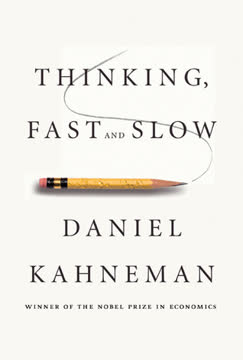
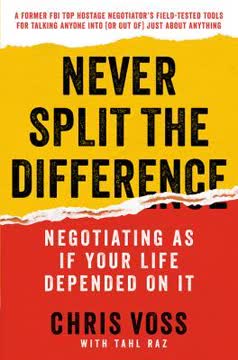
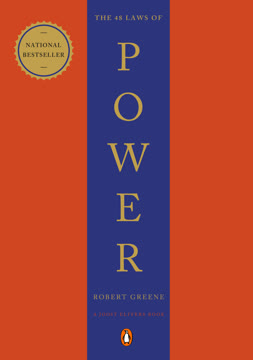

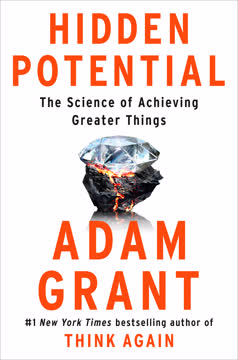
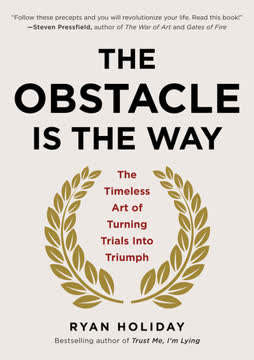
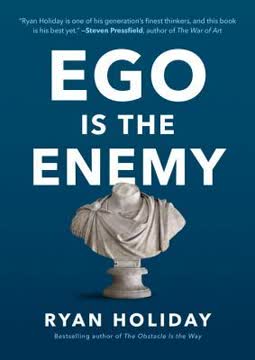
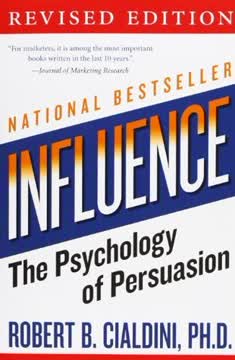


Download PDF
Download EPUB
.epub digital book format is ideal for reading ebooks on phones, tablets, and e-readers.






